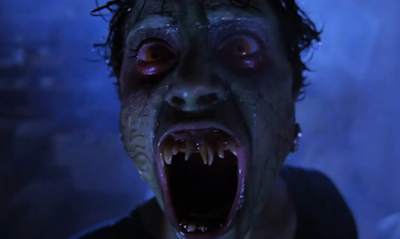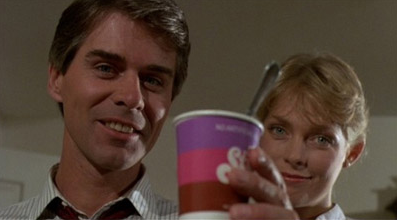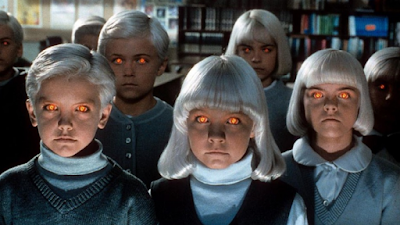(dir. Tommy Lee Wallace)
 |
| Universal Pictures |
The only Michael Meyers-less film in the Halloween franchise, Season of the Witch follows a doctor
(Tom Atkins in a role that so steeped in masculinity it becomes parody) and the
daughter of a shop-owner (Stacey Nelkin) as they uncover a businessman/warlock’s
plans to kill the world’s children through Halloween masks embedded with
fragments of Stonehenge so that he can bring back the age of witchcraft. Yeah,
it’s just as fucking zany as it sounds.
This film gets a lot of flak for not including Michael
Meyers, and as a result it’s pretty underseen by comparison. I skipped over it
for years in favor of the continuing story of the Meyers/Strode family, which
was unfortunate because Halloween III
is pretty awesome in that 80s B/C movie kind of way that only horror can really
deliver. The first part of enjoying Season
of the Witch is accepting that it’s not going to live up to the quality of
John Carpenter’s film. Tommy Lee Wallace is a capable director who delivers
some pretty chilling moments, but you’re not going to get the shot composition
(though there are a couple standouts) and the careful pacing that made Halloween such a classic. On the script
side of things, Wallace opts against the simplicity that’s allowed for the
lasting appeal of Halloween and goes
for a complicated set-up involving witchcraft, androids, and masks that turn
kids’ heads into a mess of snakes and insects in a story that’s ambitious even
if it doesn’t always make sense (there’s a very loose understanding of the
popularity of cheap Halloween masks, and time zones that just has to be
accepted for the story to work.) Wallace does deserve praise for switching up
the format, especially considering the boom of slasher movies at the time. The
corporate investigation that our leads find themselves involved in, and
world-ending stakes are uncommon to the genre at the time, and even when the
pieces don’t all fit, Wallace does deliver an incredible amount of tension.
This tension is also helped along by John Carpenter and Alan Howarth’s score
which really cements the feeling of Season
of the Witch being a Halloween
film.
What works in greatest favor of the film is how much it
feels like the holiday. It’s funny, and frightening, gross, mysterious, and a
little bit impenetrable from an outsider’s perspective. It delves right into
the folklore of Halloween and our childlike fascination with masks, which is in
some ways just as important as the lasting fear and legacy of the Halloween
story of the babysitter alone in the house with a killer. As a companion piece
to Carpenter’s films, you can really see how this would have worked as an
anthology franchise that explored our changing views and fears of the holiday,
past, present, and future. As an added bonus, the jingle for the Silver Shamrock
Halloween mask commercial is sure to be stuck in your head long after Halloween
is over, and you’ll either love or hate the film for that reason alone.
Scare Factor: 2/5 There are some genuinely impressive
moments of horror, and a killer ending. While it’s obvious that not all the
plot threads come together in a way that makes sense, Halloween III: Season of
the Witch is such an immersive experience that you’ll buy into the nonsense it
offers enough to be suitably chilled, and have a good time the whole way
through. What more could you ask for on Halloween night?
And that’s it for this year! Thanks for reading and if this
month was your introduction to the blog, be sure to stick around for full
reviews of this fall’s awards contenders and blockbusters.
Lastly, if you’ve yet to get your fill of horror, I co-wrote
a list of The 100 Best Horror Movies of the 2000s (so far) so be sure to check
it out and browse the site!:
http://www.audienceseverywhere.net/100-horror-2000s-lists/





















